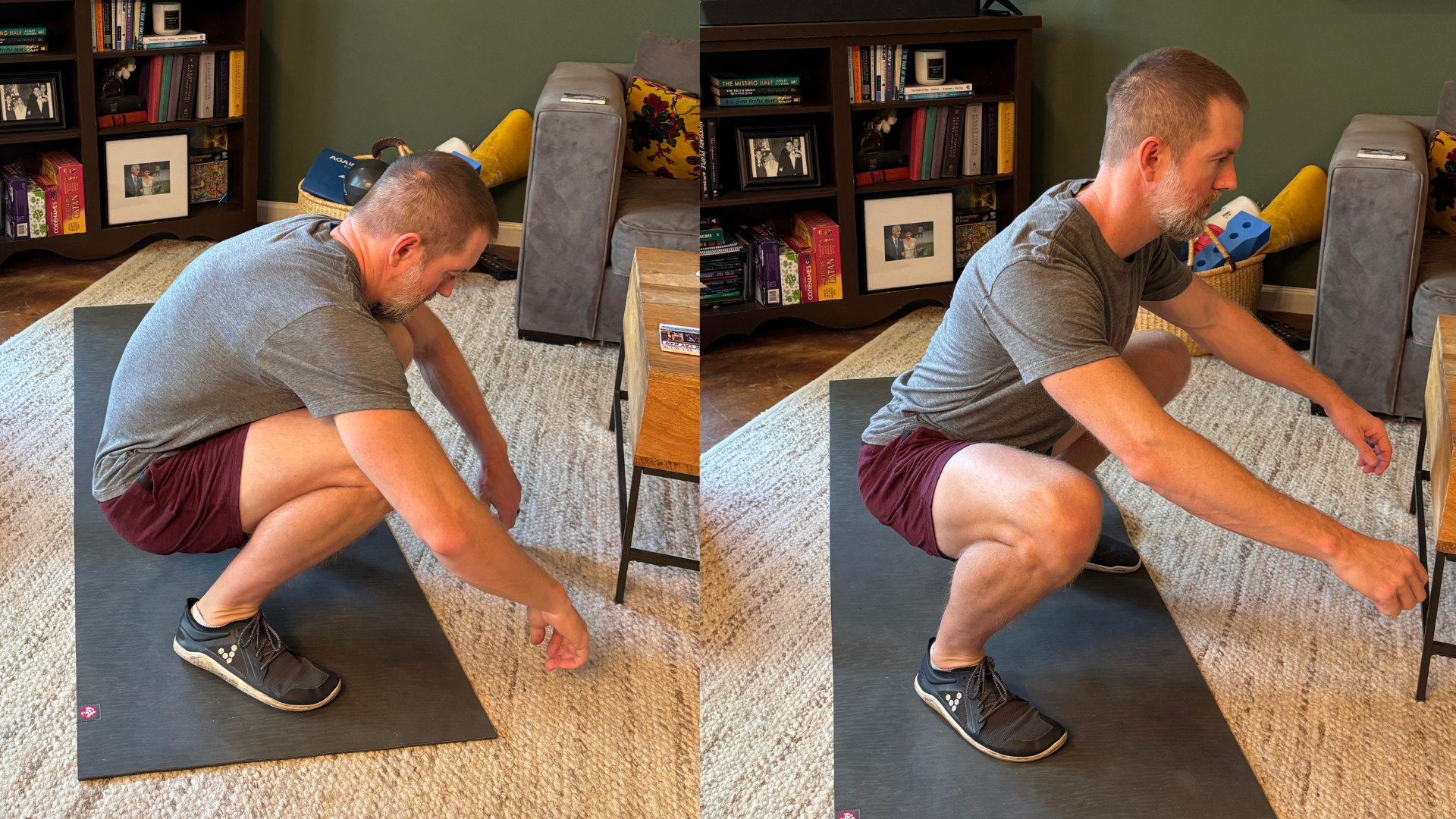What We Can Learn From Yoga Injuries
Written By Kyle Ligon - MovementLink.FIT Head Coach
What? Yoga can cause injuries? Absolutely, but it’s not as crazy as it sounds and there’re some major takeaways from yoga injury data that we can apply to our own personal exercise choices.
First, let’s dive in with some information from a meta analysis published in the journal BMC Complementary Medicine and Therapies - Adverse Effects of Yoga: A National Cross-Sectional Survey
21.4% yoga users reported acute adverse effects, occurring after a mean of 7.6 years of yoga practice.
10.2% reported chronic adverse effects.
The most commonly reported yoga practices that were associated with acute adverse effects were hand-, shoulder- and head stands (29.4%).
The risk of adverse effects was higher in participants with chronic illnesses and those practicing only by self-study without supervision.
So, what are my takeaways?
The injury rates of yoga are relatively low, but yes, there are injury. Yoga is great, but proper technique, someone performing a reasonable amount of yoga each week, exercise selection that balances risk/reward, and whether or not the yoga practice is supplemented with power, strength, muscle, VO2 Max, lactate thresholds, and endurance/stamina training (The Value of Cross-Training) are likely the biggest factors to who is getting injured and how badly.
Technique
It is no surprise to me that those who had supervision had lower chance of injury. Being a coach myself, I am obsessed with helping people perform exercises better and having a technique advocate on your team with you day in and day out has incredible value. Even though yoga poses are low impact, our bodies work best when used properly (Why Functional Movement Patterns?). Just doing something that looks like the position is not good enough. If we are accidently accumulating massive amounts of time in positions that use our body in sub-optimal ways, those sub-optimal poses will work their way into our everyday movement patterns, compounding into larger issues and potentially into injury. Because the human body is designed to move best in specific ways, the good news is that proper technique for yoga is no different than the proper technique we coach for our cross-training program. Instead of memorizing what to do in every pose, when you learn why, that knowledge and developed skill can transfer to everything in your life. Want to learn? Check out our free Technique Foundation Course.
Reasonable Amounts Each Week
Like all exercise practices, I think it is most likely that most of the injuries occur to those whose lifestyles, outside of the program, are the furthest from MovementLink’s Lifestyle Recommendations which center around sleep, exercise, nutrition, and breaking sedentariness (which would also be the most likely to have a chronic illness) and also to those who are the most extreme in their practice. Yoga, just like other exercise sports - Running, Cycling, CrossFit, Powerlifting, Olympic-style Weightlifting, and Bodybuilding, etc. - has its indoctrinated fans who put exercise-sport-specific results as their guiding light when determining how much and what type of exercise is enough. What I mean by this is that yogis may put obtaining extreme positions as a goal while people following a powerlifting program may put maximizing their 1 rep max deadlift as their goal. These are sport-specific goals that don’t necessarily transfer optimally to life outside of the sport.
Instead of digging deeper into why those of us who are not professionals we are all exercising to begin with, to integrate our time in the gym with living amazing lives outside of the gym, many of the indoctrinated just keep pushing for more and more flexibility or a bigger and bigger deadlift, without taking a step back to ask things like, “How much is sufficient?”, “When do the trade-offs outweigh the goal?”. It’s easy to be fooled by your increasing exercise performance into thinking you’re on the right track because your performance is moving towards your chosen goal, but maybe you’ve chosen the wrong goal post. How much flexibility, strength, etc. is enough?
By being efficient with our time, we can accumulate 3+ hours of mobility work each week by simply creating a 10min mobility habit each day at home along with incorporating mobility as a goal in our warm-ups, workouts, and cool-downs.
Exercise Selection
This refers to the subset of all exercises that you choose to incorporate into your personal exercise program. From the yoga injury statistics above, injury rates increased for those who incorporated hand-, shoulder- and head stands into their practice. Personally, because I have opted out of adopting exercise-sport-specific goals that most inherit without deeper thought simply by being around an exercise sport culture, I have gained the confidence to choose what exercises I incorporate into my training and only choose those which I think have 1) a high transfer into my real-life goals and 2) a reasonable risk / reward profile. In yoga, it seems that the more exposure to hand-, shoulder- and head stands, the more risk increases. I also do not see the direct benefit of these exercises into people’s everyday lives, so if you’re a yogi and not all that into that stuff, then it’s probably better to just leave it out of your practice.
With my personal exercise program being most similar to a CrossFit program, personally I feel the heavy barbell snatch (Should You Snatch?), kipping handstand push-ups, and almost any 1 rep max lift carries way too much risk for me, especially when compared to the multitude of other exercises that can still get me the exact results I’m after. If my younger days, I simply inherited, without much deeper thought, goals that mirrored the requirements of the sport of CrossFit, so I incorporated all of those things into my training. After many nagging injuries (that I have now practically eradicated), I was finally able to take that step back and make choices that better fit my goals. Yes, if life required me to test my 1 rep max barbell snatch, I would not be as good at it if I had kept it as a major staple in my workouts all these years, but that time has been dedicated to other things and I am extremely happy with where my life and fitness is and have never been limited in anything because of my lack of heavy snatch training.
Summary
A view under the hood of yoga injuries make it look like some yogis are making the same mistakes that most people make across all exercise programs.
We need a coach’s eye to help us develop our technique. Although your technique is good enough to workout today, don’t assume your current technique is good enough for 1month, 6 months, 1 year, 10 years, from now. We all have issues and developing quality functional movement patterns is a lifelong journey that needs expert eyes.
We need adequate, but reasonable exposure to all areas of fitness - mobility, power, strength, muscle, VO2 Max, lactate thresholds, endurance, and stamina training.
We should not follow the herd and we should choose exercises that 1) transfer directly into the results you’re after and 2) have a reasonable risk / reward profile.
Make choices that fit the life you want to live, not someone else’s.









